Key info
Visiting guide
Open 24 / 7
Free entry
Paid car parks
History of Stourport Bridge
1773 – Trustees are appointed to obtain an Act of Parliament for building a bridge across the river Severn at Stourport and acquire this existing Redstone Ferry a little further downriver from the proposed site of the bridge. The Act gave the trustees powers to borrow, on the security of the tolls, a sum not exceeding £7,000 to build the bridge. They hire Thomas Farnolls Pritchard to design the bridge, an architect from Shrewsbury who also designed the cast iron bridge at Ironbridge [1].
1775 – The first bridge at Stourport is opened. It had brick abutments and three brick arches with a cast iron core. The stone was most likely sourced from the quarries at Arley. A causeway of 49 arches was also constructed on the approaches across the river meadows. It’s worth noting the first bridge at Stourport would not be classified as an iron bridge because brick was the key material [2].
1795 – A sudden thaw causes the River Severn to flood at an unprecedented scale, which sends quantities of ice down river. The speed of the torrent smashes chunks of ice into the first bridge at Stourport severely damaging the structure [3]; therefore, most of the bridge was washed away. Plans were put in hand to build a replacement. Consequently, the Trustees applied for another Act of Parliament, which authorised the trustees to rebuild the bridge by borrowing a further sum of £3,000 on security of the tolls. Whilst under this new Act the previous tolls were repealed, and new ones substituted on the Redstone Ferry to pay for a new bridge. A temporary wooden bridge was constructed soon after, whilst the trustees considered a permanent replacement.
1802 – The trustees seek estimates for an iron arch to be erected on stone abutments that were already in construction.
1806 – A second bridge is completed to replace its predecessor. A single arch measuring 165 ft was constructed of cast iron connected to the previous causeway. Is thought the design was that of John Hazledine of Bridgnorth.
1868 – Stourport Bridge is in urgent need of repair. The trustees send our requests for tenders to replace it with an entirely new substantial iron bridge. An Act of Parliament is also obtained granting the trustees powers to borrow £7,000 yet again using tolls as security. At the end of the year, it was agreed to appoint Edward Wilson of Westminster as engineer, who is also credited with designing Worcester Shrub Hill railway station.
1870 – The third bridge is completed and opened to traffic in October. The bricklaying was delivered by Messrs Henry Hilton of Birmingham who lowered and widened the roads on both causeways and lower and strengthen the existing abutment arches. To enable foundations to be put in below river level, for both abutments, piles were driven deep into the riverbed, Coffer Dams then being constructed to enable the bricklayers and masons to work in safety, pumps being used 12 hours a day in order to keep the workings dry.
One Thomas Vale was listed on the brickwork contract. He most likely had a supervisory role at Hilton’s such as site foreman. Vale moved from his birth town in Warwickshire to Stourport where he setup his own business Thomas Vale Construction, which still exists in the town.
The ironwork was supplied and erected by Lloyds – Fosters Department of the Patent Shaft & Axletree Company of Wednesbury. They also provided a temporary ferry service for passengers whilst dismantling the old cast iron bridge. This service also doubled as safety boats for any workmen that fell into the river from scaffolding. Another safety feature was the requirement to watch and light up the bridge during construction.
1892 – Ownership of the bridge is transferred from the trustees to Worcestershire County Council by Act of Parliament and the tolls are abolished. The council became responsible for the former trustees’ liabilities, including keeping a light burning every night in the centre of the bridge for navigation and safe guidance of vessels, failure to do so would result in a fine of £5.
The spiral staircase manufactured by F. Bradley & Co. of Kidderminster is also added after this date; however, we are not sure of the exact year [1].
1998 – Stourport Bridge receives new heritage style lighting columns manufactured by William Sugg & Co. Ltd of Crawley.
2006 – The bridge was completely refurbished by Worcestershire County Council, which included the coat of paint that remains to this day.
Architecture and dimensions
The main arch measuring 160 ft (48.8 m) is made of cast iron flanked by stone faced brick arches, which are part of a causeway consisting of 25 brick arches to the north with 6 to the south. The lower section of the causeway on the north-east side is late 18th century brick with stone springers to the arches. The causeway above is early 20th century panelled brick parapet imitating the 19th century parapet. The iron arch has a gentle curve with interlaced circles to the parapet and traceried circles in the spandrels. Cast iron shields with date 1870 and initials S.T.B. are attached to the spandrels at each side [4].

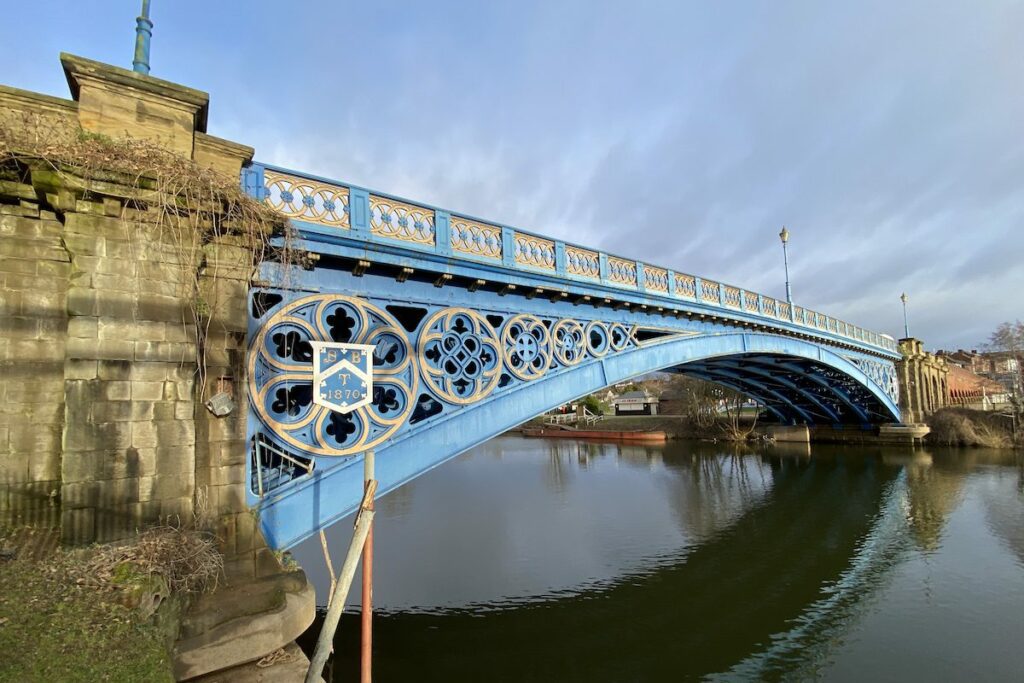
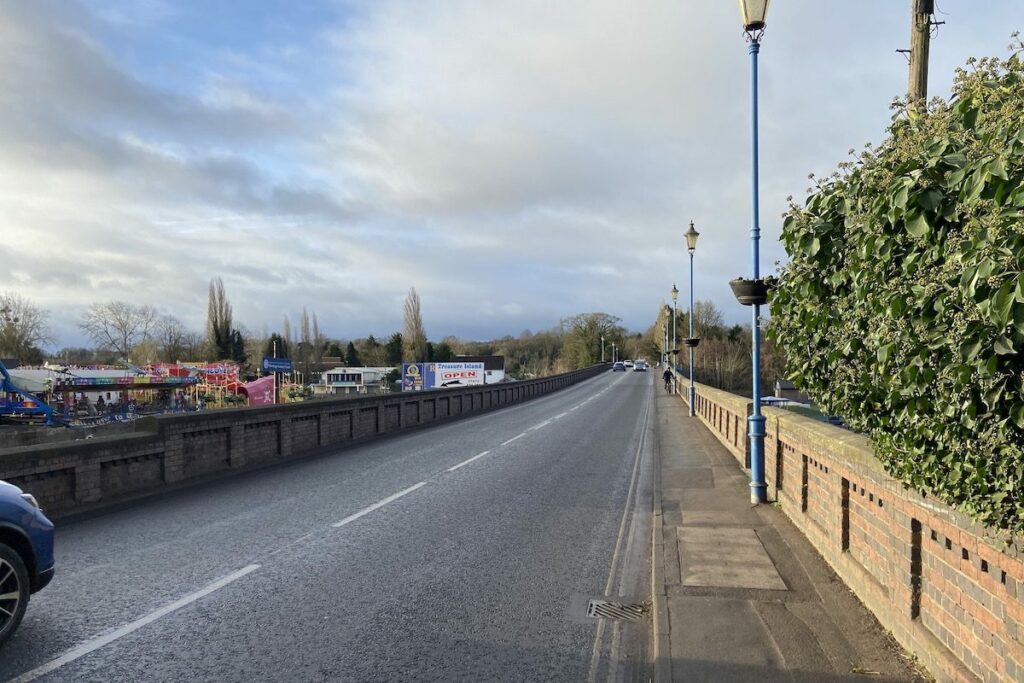



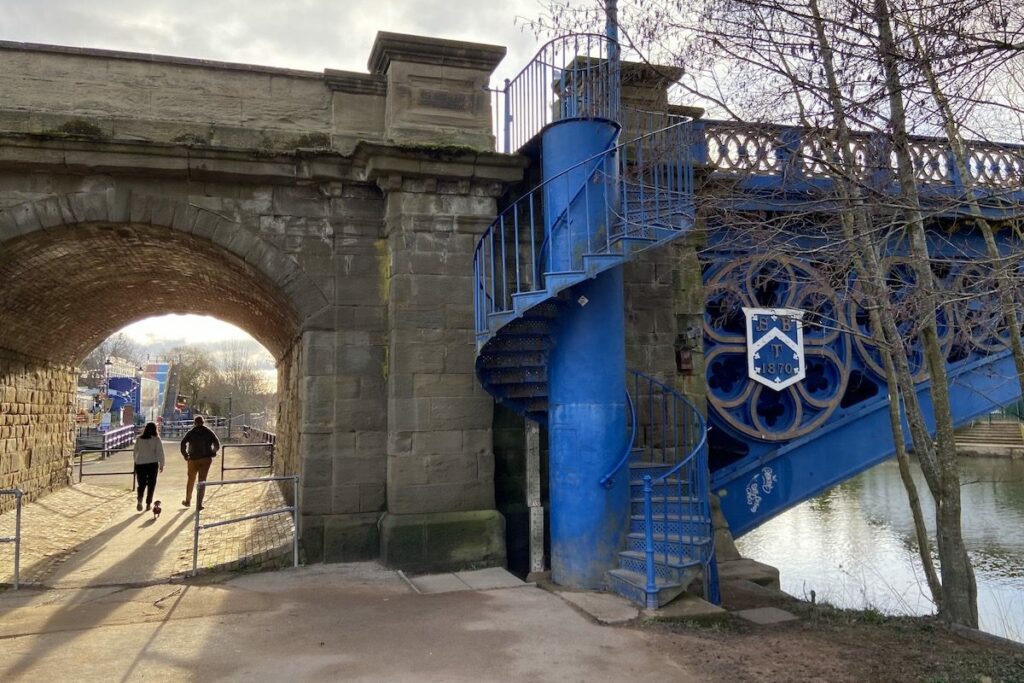

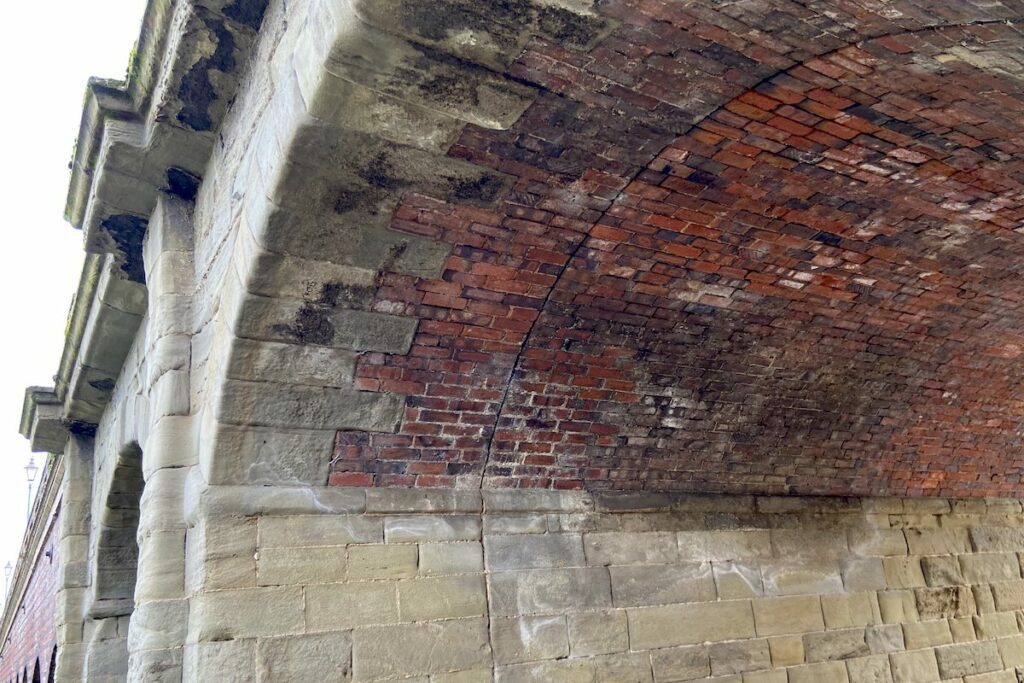


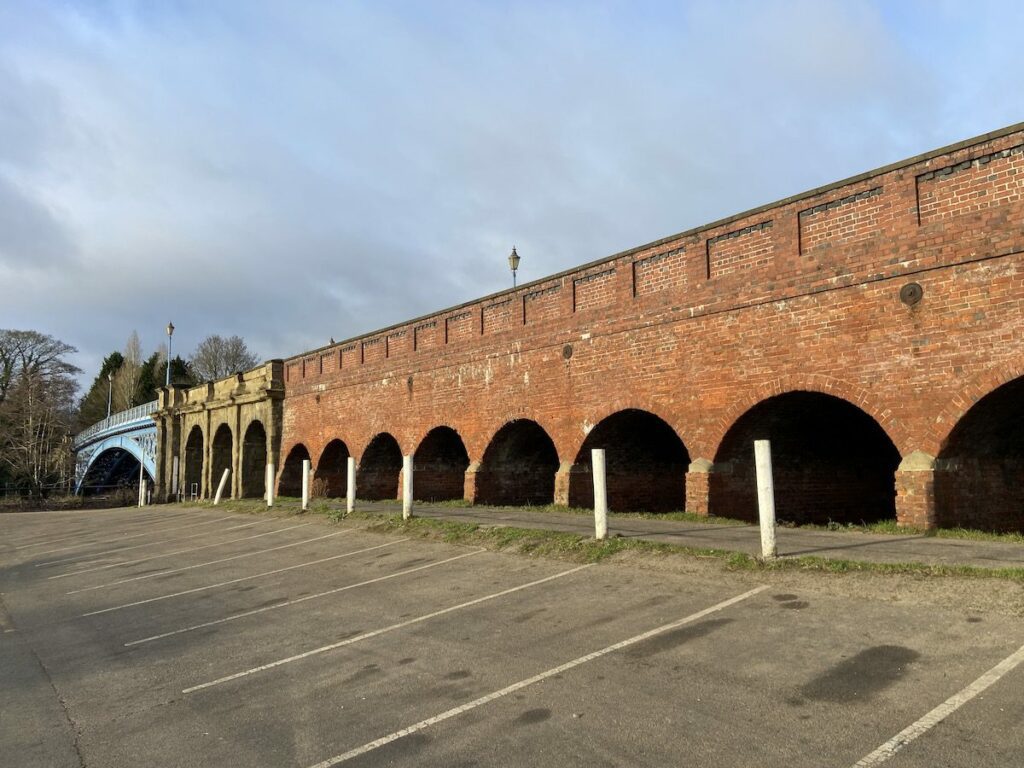
 Delph Locks
Delph Locks